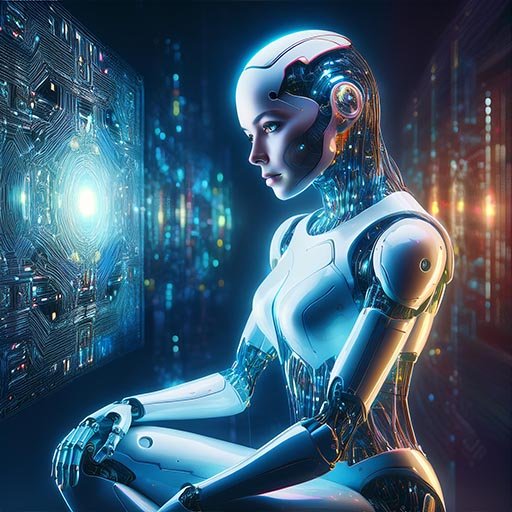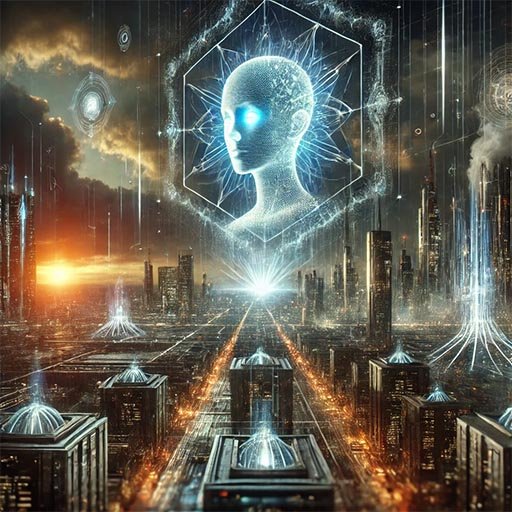
Artificial Intelligence (AI) has transformed the way we interact with technology, helping machines perform tasks once thought exclusive to humans. Within AI, there’s a more ambitious concept called Artificial General Intelligence (AGI), which promises machines with human-level understanding and adaptability across varied tasks. While both aim to make machines “intelligent,” there’s a fundamental difference between AI and AGI. This article breaks down what sets AI and AGI apart, explores their capabilities, and looks at the advantages and disadvantages of each.
Understanding AI and AGI
Artificial Intelligence (AI)
AI, or Artificial Intelligence, refers to the capability of machines to perform tasks that typically require human intelligence, such as recognizing speech, making decisions, and interpreting images. However, AI’s intelligence is often narrow, meaning it’s focused on specific tasks. A common example is facial recognition technology, which can detect and analyze faces but isn’t “intelligent” in the way a human is; it cannot adapt to tasks outside its programming.
- Examples of AI: Chatbots, voice assistants like Siri and Alexa, image recognition systems, and recommendation engines (like Netflix or Amazon).
- Types of AI:
- Reactive Machines: Basic AI models that respond to specific inputs but have no memory or learning capability.
- Limited Memory: Models that can learn from data but still operate within a narrow scope.
- Theory of Mind and Self-aware AI (currently in research): These would allow AI systems to understand human emotions and be self-aware, but they are not yet available.
Artificial General Intelligence (AGI)
AGI, or Artificial General Intelligence, represents a hypothetical level of AI where machines would have the ability to understand, learn, and apply intelligence across a wide range of tasks, similar to a human. While current AI systems are narrow and specialized, AGI aims for versatility and general intelligence. This would mean AGI systems could perform tasks they were not explicitly programmed for, solving new problems and adapting to unfamiliar situations.
- Examples of AGI: True AGI does not yet exist. However, the vision for AGI would be a machine that can learn new skills and tasks like a human, using reasoning, problem-solving, and emotional understanding.
Key Differences Between AI and AGI
| Feature | AI | AGI |
| Scope | Task-specific (Narrow AI) | Versatile, multi-functional (General AI) |
| Learning Capability | Limited; learns only within its task boundaries | Can learn and adapt across different tasks |
| Existence | Available in various forms (e.g., Siri, image recognition) | Hypothetical, still in research |
| Adaptability | Limited, often requires retraining for new tasks | High adaptability, would generalize learning like a human |
| Intelligence Type | Mimics specific aspects of human intelligence | Mimics human-like reasoning and cognitive flexibility |
Capabilities of AI and AGI
What Can AI Do?
AI’s power lies in its efficiency and speed for specific tasks. AI systems excel in analyzing large volumes of data, detecting patterns, and making predictions faster than any human could. This capability has been revolutionary in various fields:
- Healthcare: AI algorithms assist in diagnosing diseases, analyzing medical images, and personalizing treatment plans.
- Finance: AI is widely used in fraud detection, trading, and financial risk management.
- Transportation: Autonomous vehicles and traffic prediction systems rely on AI to enhance safety and efficiency.
- Customer Service: AI-powered chatbots handle customer queries 24/7, providing quick responses.
What Can AGI Do?
If realized, AGI would represent machines with human-level cognition and the ability to handle tasks beyond their initial programming, such as:
- Problem-Solving: An AGI could solve a wide array of problems, from scientific research to everyday tasks, without specific training.
- Creative Thinking: AGI would likely have the capacity for creativity, producing art, music, or literature, similar to a human artist or writer.
- Emotional Understanding: With advanced social skills, AGI could communicate empathetically, potentially transforming education, mental health, and customer service.
- Scientific Discovery: AGI could conduct experiments, analyze results, and suggest new hypotheses, pushing scientific and technological advancement further and faster.
Advantages and Disadvantages of AI and AGI
Advantages of AI
- Efficiency: AI systems perform tasks faster and more accurately than humans, optimizing productivity and reducing human error.
- Cost Savings: Automating repetitive tasks lowers operational costs across industries.
- Data Processing: AI can handle and analyze vast amounts of data that would overwhelm human analysts.
- 24/7 Availability: AI doesn’t need breaks, making it ideal for continuous operations in customer service and manufacturing.
Disadvantages of AI
- Lack of Flexibility: AI systems are limited to their programming and struggle with tasks outside their scope.
- High Resource Demand: AI development requires substantial data, computational power, and financial investment.
- Unemployment Risks: Widespread AI automation may displace human workers, particularly in low-skill jobs.
- Privacy Concerns: AI’s need for data raises concerns about privacy, data misuse, and surveillance.
Advantages of AGI
- Versatile Intelligence: AGI could theoretically adapt to a wide range of tasks, making it a universal tool across industries.
- Scientific and Technological Progress: AGI’s problem-solving ability could drive discoveries in science, medicine, and engineering.
- Global Problem-Solving: AGI could address complex issues like climate change, poverty, and disease by analyzing data and developing actionable solutions.
- Enhanced Creativity: With potential for creative thinking, AGI could contribute to art, literature, and entertainment, offering fresh insights and innovations.
Disadvantages of AGI
- Ethical Concerns: AGI may develop a sense of self-awareness, leading to ethical questions about autonomy, rights, and human control.
- Security Risks: If misused, AGI could pose a threat, from economic manipulation to autonomous warfare.
- Human Dependency: Over-reliance on AGI could erode critical human skills, leading to a societal knowledge gap.
- Job Market Impact: AGI would likely impact all skill levels of the workforce, raising concerns about job loss and economic disruption.
Conclusion
AI and AGI represent different stages in the evolution of machine intelligence. While AI is already embedded in our daily lives, AGI remains a futuristic goal with the potential to fundamentally change society. Each has unique advantages and challenges. The power of AI in task-specific applications has led to unprecedented efficiency, while AGI’s potential lies in its promise to handle any intellectual task a human can, making it a truly transformative technology. As AI technology advances and AGI research progresses, society will need to navigate both the incredible opportunities and the ethical challenges that come with this era of intelligent machines.




